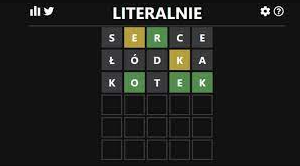Table of Content
- Introduction
- Importance of Personalised Packaging in the Food Industry
- Types of Packaging Solutions
- Designing Packaging for Different Products
- Benefits of Using Food Packaging
- Challenges and Considerations in Food Packaging
- Trends and Innovations in the Food Packaging Industry
- Case Studies:
- Tips for Choosing the Right Food Packaging Partner
- Conclusion:
- FAQs
In today’s culinary world, where food presentation is as important as taste, customised food packaging has emerged as a game-changer for businesses looking to stand out in a crowded market. From restaurants and cafes to food delivery services and gourmet food shops, the way food is packaged can significantly impact consumer perception and overall dining experience.
Introduction:
Food presentation has evolved beyond the confines of the plate; it now extends to the packaging itself. Customised food packaging offers businesses a canvas to express their brand identity, creativity, and commitment to quality. In this article, we’ll delve into the world of packaging, exploring its importance, benefits, design considerations, and innovative solutions.
The Importance of Customised Food Packaging
Custom Printed Boxes serve as the first point of contact between a customer and a product. For food businesses, it’s not just about preserving freshness and preventing contamination; it’s also about making a memorable impression. Customised food packaging allows businesses to tell their story, showcase their unique selling points, and create a lasting connection with consumers.
Benefits of Food Packaging
The benefits of customised food packaging are manifold. Firstly, it helps businesses differentiate themselves in a competitive market. A well-designed package can attract attention on the shelf or in a delivery bag, prompting customers to choose one product over another. Additionally, customised packaging can enhance brand recognition and loyalty. When customers associate a particular design or logo with a positive dining experience, they’re more likely to repeat their purchase.
Designing Customised Food Packaging
Designing customised food packaging requires careful consideration of various factors, including brand identity, target audience, product specifications, and industry trends. The packaging should reflect the brand’s personality and values while also meeting practical requirements such as food safety standards, durability, and eco-friendliness. Collaborating with graphic designers and packaging experts can help businesses bring their vision to life while ensuring functionality and compliance.
Innovative Solutions for Different Food Products
Customised food packaging isn’t one-size-fits-all; it varies depending on the type of food product and its intended use. For example, packaging for perishable items like fresh produce or prepared meals may require special features such as moisture-resistant materials or temperature control mechanisms. On the other hand, packaging for dry goods or snacks may focus more on visual appeal and convenience. By tailoring packaging solutions to specific food products, businesses can maximise both aesthetics and functionality.
Case Studies:
Real-world examples illustrate the impact of customised food packaging on businesses’ success. Take, for instance, a local bakery that saw a significant increase in sales after redesigning its cookie boxes with vibrant colours and eye-catching graphics. Similarly, a meal delivery service experienced a surge in customer retention rates after introducing personalised packaging that included handwritten notes and customised labels. These case studies demonstrate how packaging can drive brand awareness, customer engagement, and ultimately, revenue growth.
Future Trends in the Packaging Industry
The customised food packaging industry is poised for further innovation and growth. As consumers become more conscious of sustainability, there’s a growing demand for eco-friendly packaging solutions from renewable or biodegradable materials. Additionally, technological advancements, such as digital printing and smart packaging, are opening up new possibilities for customisation and personalisation. Businesses that embrace these trends and adapt to changing consumer preferences will have a competitive edge in the market.
Conclusion: The Art of Culinary Packaging
In conclusion, customised food packaging is more than just a practical necessity; it’s an art form that can elevate the dining experience and leave a lasting impression on customers. By investing in thoughtful design, quality materials, and innovative solutions, businesses can set themselves apart and create memorable moments for their patrons. Whether it’s a beautifully packaged dessert from a local bakery or a custom-branded meal kit delivered to your doorstep, personalised perfection in food packaging is sure to tantalise the senses and delight the taste buds.
FAQs
- What is customised food packaging?
- Why is personalised packaging important for food products?
- What are the different types of food packaging solutions available?
- How can customised packaging enhance the branding of food products?
- What factors should be considered when designing food packaging?
Recommended Article: 2024’s Packaging: Elevate Your Gifts with Custom Presentation Boxes!



























